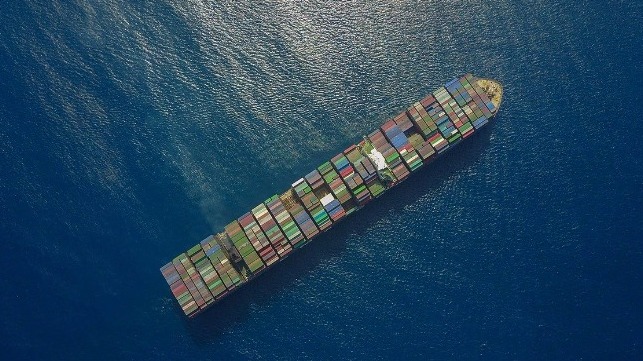Long-Term Freight Rates Have Finally Peaked Says Xeneta

Industry observers are continuing to look for signals to confirm the belief that freight rates are peaking confirming the industry’s earlier forecast that the markets would normalize in the second half of 2022. Market intelligence and benchmarking platform Xeneta issued its latest market analysis today saying it believes long-term rates have finally peaked just as Hapag-Lloyd dramatically increased its forecast for 2022 citing an 80 percent increase in freight rates.
“Indications are there that we may have reached a peak and that prices of new agreements are more than likely to hold than suddenly leap up again, as we’ve been accustomed to seeing of late,” said Patrik Berglund, CEO of Xeneta. While the latest Xeneta Shipping Index highlights that rates are up 112 percent in the past year and 280 percent in the past three years from July 2019 before the start of the pandemic, it also recorded slowing month-on-month growth and a continuing weakening of spot rates.
July’s increases are the slowest since January, noted Berglund saying that upward pressure on long-term agreements is easing as spot rates fall across major trades. Adding to the expectation that prices may have peaked, Xeneta points out that volumes have fallen on many routes in 2022 suggesting that demand is easing in response to the economic pressures.
“The carriers have enjoyed staggering rates rises, driven by factors such as strong demand, a lack of equipment, congestion, and COVID uncertainty, for 17 of the last 19 months,” comments Berglund. “July has seen yet more upticks across the board, but the signs are clear there is a ‘shift’ in sentiment as some fundamentals evolve. However, that’s probably of little comfort to shippers that have been continually battered by a market in overdrive and now see prices stabilizing at historically high levels.”
Xeneta’s data aligns with forecasts made by many of the leading carriers earlier in 2022. Both Maersk and Hapag-Lloyd in their earnings outlooks suggested that the markets were likely to stabilize by mid-year. They had forecasted slowed growth in the second half of 2022, although earlier today Hapag-Lloyd raised its forecast for the second half and all of 2022 citing the strength of freight rates in the first half of 2022.
Like the carriers, Xeneta is highlighting several factors that are creating uncertainty in the markets. In addition to declining volumes, they point to ongoing congestion primarily in U.S. and European ports and now the potential of union job actions that could impact the supply chain. The union representing UK longshore workers has threatened strikes at Felixstowe and Liverpool while Hamburg has been among the German ports hit by recent strikes. Despite the impact of the war in Ukraine, Rotterdam recently said its volumes were flat for the first half of the year while Antwerp reported declines.
Xeneta believes that shippers will also likely take advantage of the softening in the market to possibly renegotiate contracted rates given the recent spot market drops. “Our customers, mainly large volume shippers, now find themselves in a stronger negotiating position,” said Berglund.

that matters most
Get the latest maritime news delivered to your inbox daily.
A survey in July of Xeneta’s customers showed that 44 percent “no longer feel confident in the stability of long-term contracts.” Half of those respondents, 22 percent of the total, said they were more likely to allocate lower volumes only to cheaper contracts, while 22 percent preferred to move allocation to the spot market as soon as prices dip below long-term rates.
Berglund concluded that “It’s going to be an interesting few months ahead.”
